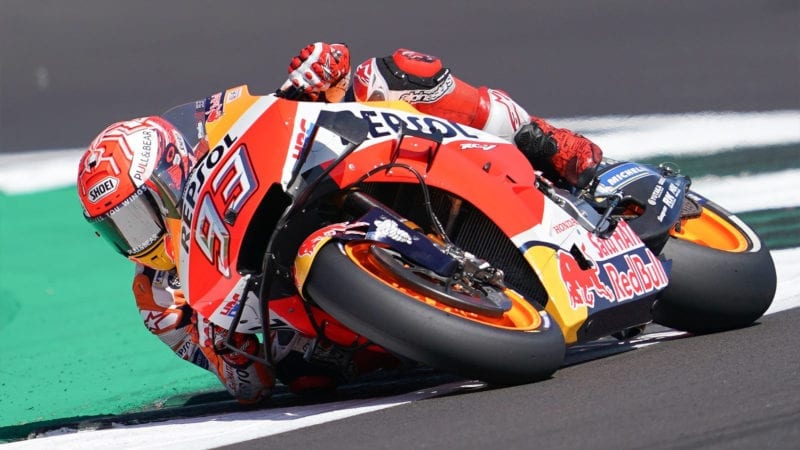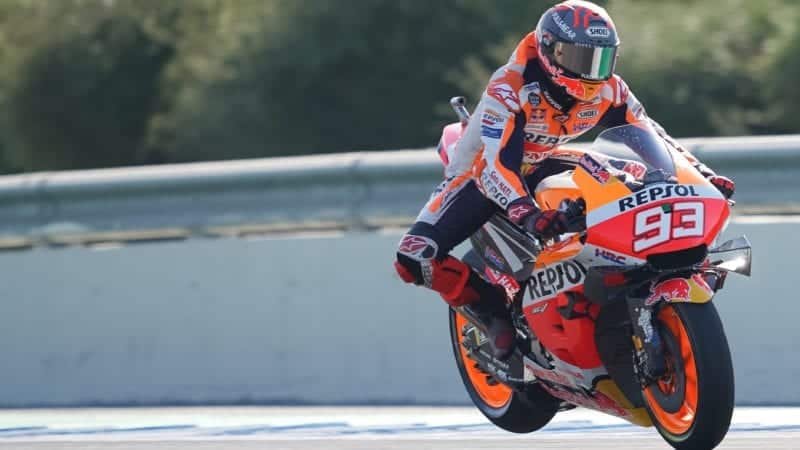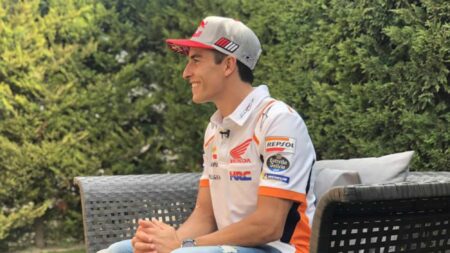It’s the sharpest knife edge of them all, and Márquez is never better than when he’s riding that knife edge. That’s why he’s so good in iffy, damp conditions, when the line between glory and gravel trap is at its narrowest.
Even then he goes all-in, which is why when he’s on the track you never quite know what’s going to happen next. In this respect he reminds me of Kevin Schwantz.
There are so many Márquez moments. There’s the standard front-end tuck, when he uses that edge-of-the-cliff moment to help turn his Honda. There are the innumerable front-end saves, when we laugh at the television, like we laugh when a magician pulls off a particularly mind-boggling trick.
And then there are those solid-gold moments that leave us sat on the sofa wide-eyed and open-mouthed: how the hell did he get away with that?!
There was his COTA pole position in 2015, when his bike stopped on the start/finish with three minutes of qualifying remaining. He parked the bike against the pit wall, sprinted down pit lane and jumped on his spare RC213V.
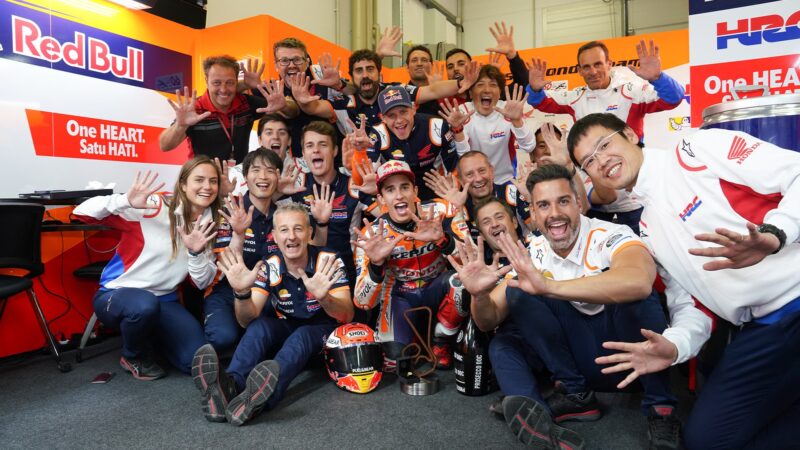
Márquez keeps a tight team around him
Honda
He completed his out-lap with seconds to spare, leaving him one lap only to elevate himself from the third row of the grid. He had the rear in the air into pretty much every corner and was out of the seat several times, but he took pole anyway.
Then there was last year’s Brno GP, when he took pole by 2.5 seconds in pouring rain, using slicks! Once again, his rivals were slack-jawed in disbelief.
“I don’t understand how the track was dry for Marc, but not for the rest of us,” deadpanned Danilo Petrucci, speaking for most of the grid.
My own favourite is Sachsenring 2016, because it highlights his ability to do things with a cold front tyre that no else can.
The race starts on a cold, soaking track, Márquez not fully at ease and struggling to stay with the leaders. At one-third distance he runs off the track at high speed, rear-wheel steering his way out of the gravel trap. He’s now down to ninth and not making much headway, so he rolls the dice.
When you crash at high speed you are in the lap of the gods. Sometimes you get hurt, other times you don’t
The track is still mostly cold and damp but he charges into the pits and swaps to his slick-equipped second bike.
Pol Espargaró follows him into the pits – no doubt trusting in his countryman’s ability to make the right call at the right time – and follows him out.
What Espargaró does next only serves to shine a light on Márquez’s magic. He crashes at the very first left-hander. The track is that treacherous.
Márquez continues to ride the same razor’s edge Espargaró had been riding, pushing the front tyre enough hard to generate heat but not so hard to have it skipping across the asphalt and into the gravel.
He is now 14th, 38 seconds behind race-leader Andrea Dovizioso, but within a lap or two he is the fastest man out there, laying fat black lines with his rear tyre, even though the dry line isn’t a metre wide in places.
You can’t help thinking that if anyone else had tried this they’d be on their arse.
He takes the lead from Jack Miller – still on rain tyres – and crosses the line ten seconds ahead of runner-up Cal Crutchlow.
To me, that victory sums up Márquez better than any of his other 55 MotoGP wins. (That’s an average of eight per season in bike racing’s most competitive era.)
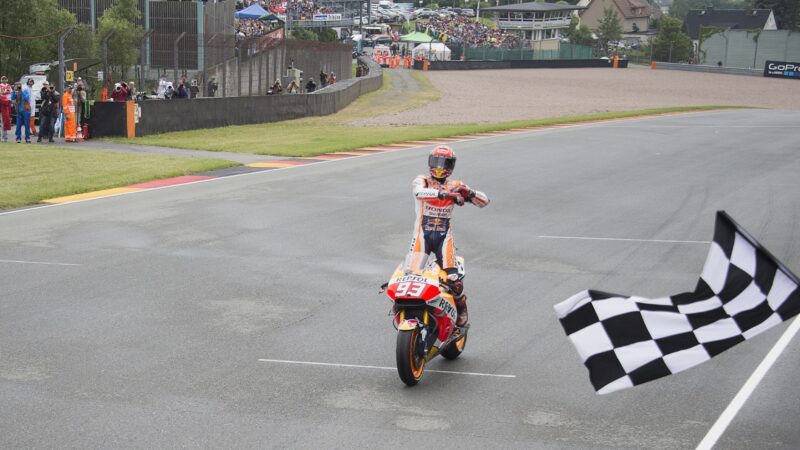
Slick riding at the Sachsenring: Márquez celebrates victory in ’16
Mirco Lazzari gp/Getty Images
Of course, at Jerez in July he overstepped the limit and paid the price. Was that arm injury inevitable because of his over-the-edge style of riding?
Only so far as crashing is inevitable if you race bikes at a high level. The fact is that Márquez doesn’t crash more than anyone else. Only once during his decade in GPs has he topped the crasher’s league in any class.
When you crash at high speed you are in the lap of the gods. Sometimes you get hurt, other times you don’t. Consider the case of Schwantz and Wayne Rainey – Schwantz hit the ground twice as often, but it was Rainey that ended up in a wheelchair.
When will Márquez return from injury? I’ve no more idea than any other journalist.
Did he try to come back too soon when he attempted to race the weekend after his accident? Yes, but this is what racers do.
When racers come back too early from injury and get away with it, they are hailed as superheroes. When they come back too early and things go awry, they are told they’re idiots, mostly by armchair orthopaedic experts on social media.
When Mick Doohan came back too early from his hideous leg injury no one called him an idiot. When he bent his still-healing right tibia and fibula by training too hard no one called him an idiot. And when he crashed and broke a collarbone because the leg was still too weak to ride a GP bike no one called him an idiot.
Instead they saw a man prepared to go way beyond what they, you or I would be prepared to do to achieve a goal. Few world champions achieve what they achieve without pushing themselves to borderline insane extremes. Rightly or wrongly, it’s what racers do.

